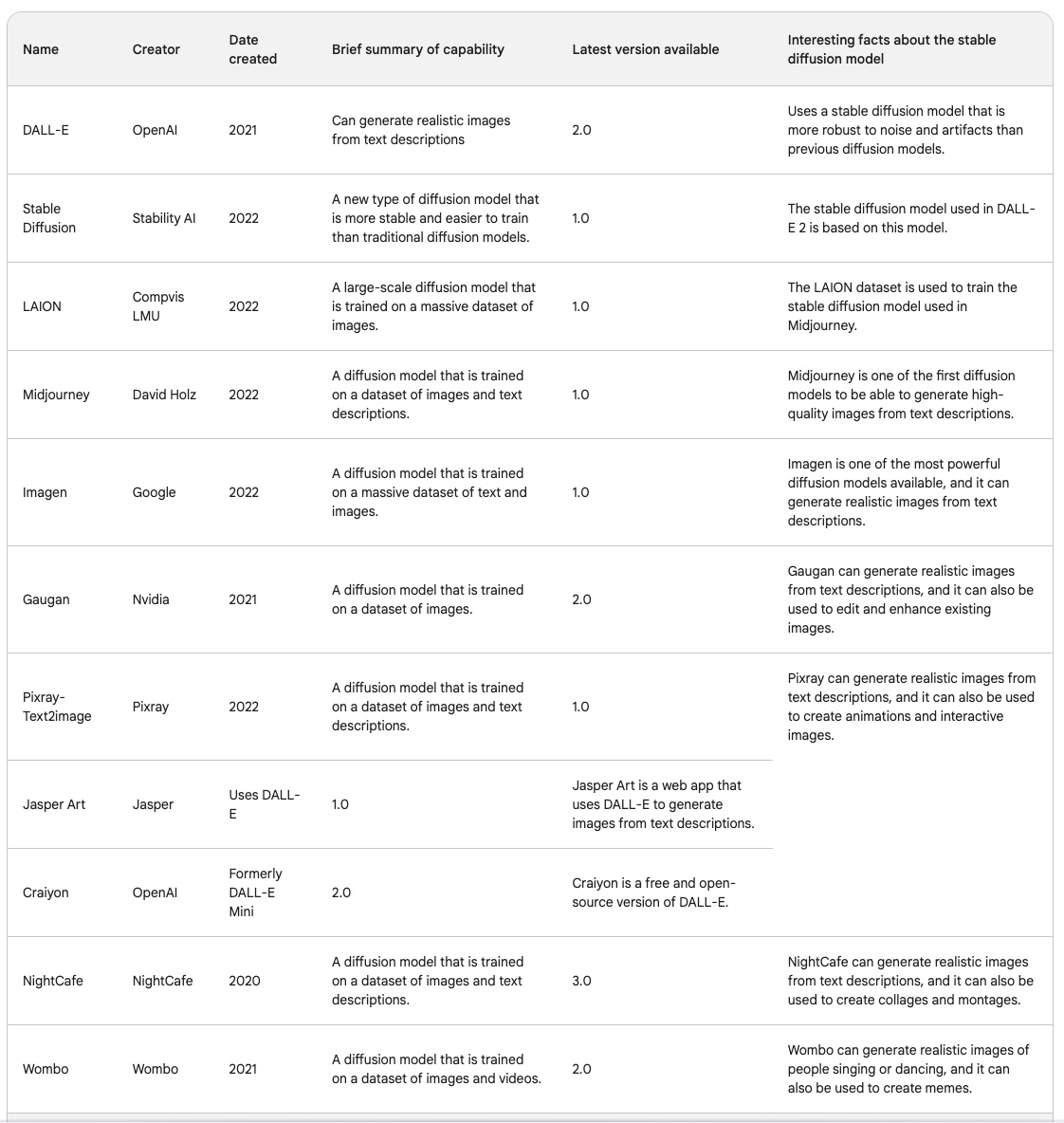Chapter 7: Image Generation with AI Models–Stable Diffusion

Intro to Stable Diffusion Models:
Stable Diffusion models are the next frontier in the AI toolbox. Unlike traditional generative models, these leverage a different form of machine learning architecture that iteratively refines an initial random noise into a coherent and often awe-inspiring image. The process mimics the natural diffusion of particles, providing a stable and robust means for generating complex and detailed visualizations. Before I go on, these models have for me created rather amazing unexpected outcomes. As an example, when working on an architectural model, I asked via the prompt that the design be unfinished with the intention of seeing the internal structures of the design the model presented. This was a bit mind blowing as when I observed the model I could see that the outcome was not just a guess. Real internal Glulam structures and fasteners were presented in the design I received. See: artmindai.com for examples.
How Do Stable Diffusion Models Work?
Picture an empty canvas gradually filling in with intricate details, as if by an invisible hand. Initially, the canvas might contain nothing but random noise. Yet, through iterative rounds of machine learning, the canvas transforms—each iteration sculpting the noise into increasingly recognizable shapes and forms, until a full-fledged masterpiece emerges. Imagine generating images that seem to originate within the heart of an NVIDIA chip and morph into the world we live in—a complex, yet beautifully executed, interplay of technology and reality. Prompting is the necessary tool in the generation of visual images: See further information on this topic at Iterativeprompting.com.
The Allure of What Can Be Done:
Stable Diffusion models can create almost fantastical outputs. For instance, think of an interactive educational experience where students can command the AI to draw out real-time, historically accurate visuals of key moments like the fall of the Berlin Wall or the discovery of DNA. Or consider their use in creating dynamic, evolving book covers that captivate potential readers with shifting yet thematically consistent designs. These are just the tip of the iceberg. In the realm of education, Stable Diffusion models can create learning materials that are not just static pages in a textbook but ever-evolving, responsive visual aids.
So whether you’re diving into the capabilities of GPT models or looking forward to the vast potentials that Stable Diffusion models can unlock, remember that these tools are more than just machines; they’re an expansion of your educational vision. The future of teaching beckons with tantalizing possibilities—are you prepared to answer the call?
Here is a chart that shows and describes all the stable diffusion models and how they can help you.

